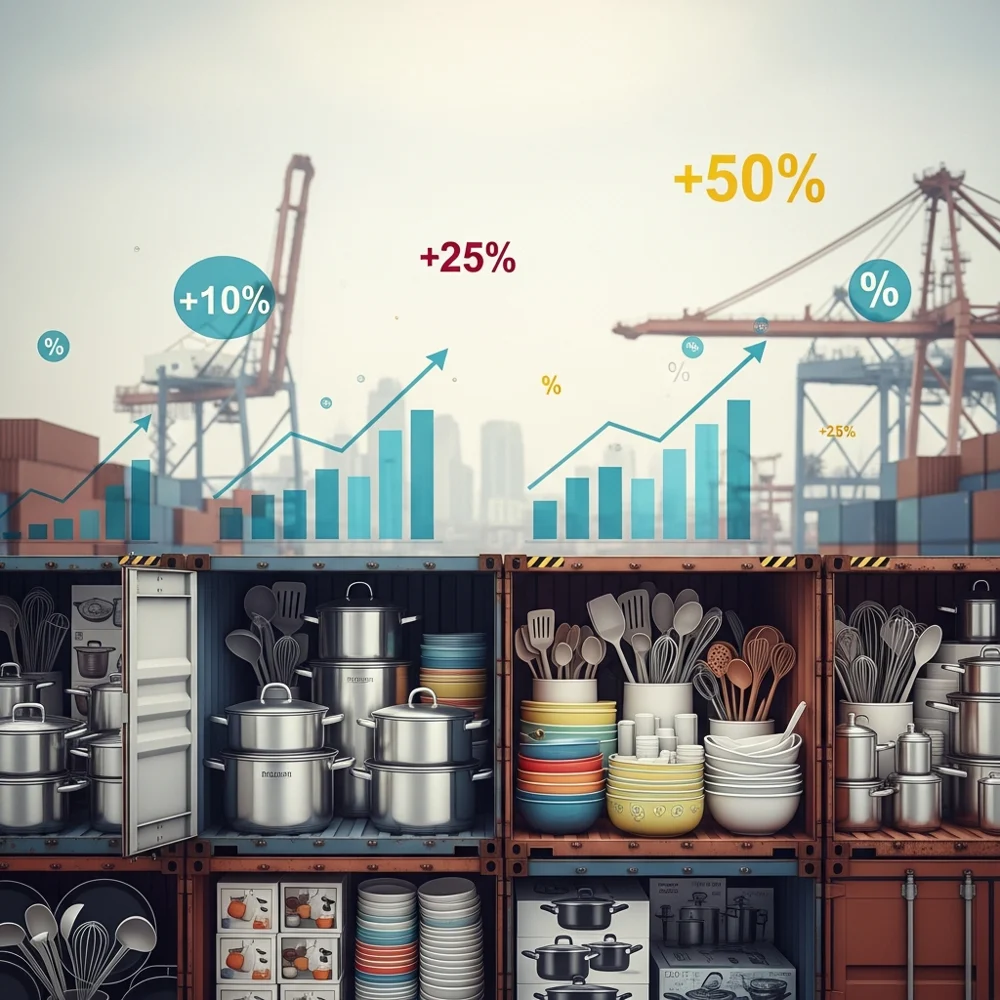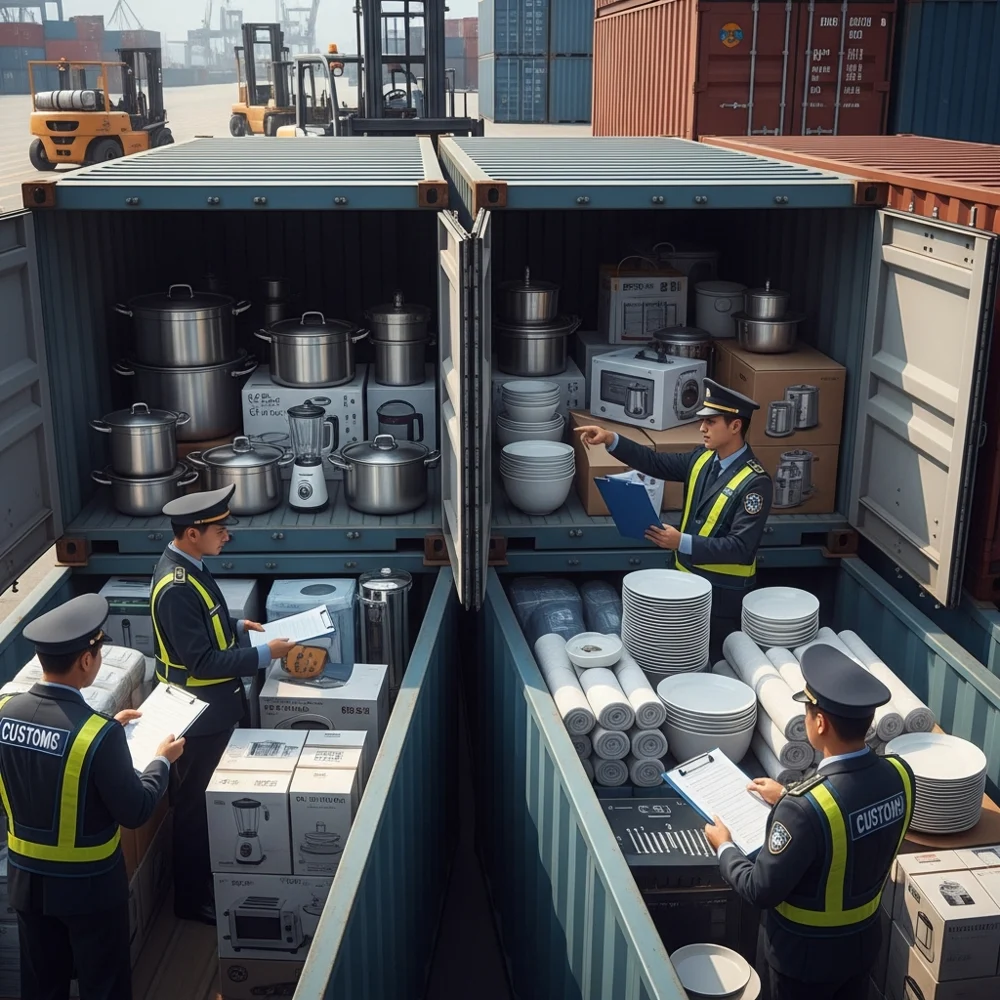If you import kitchenware from China, it’s time to take stronger action. With evolving trade policies and tariff risks growing, understanding the details of what’s coming—and how to respond—can make a big difference to your cost structure and supply chain resilience. 
Why Kitchenware Is in the Spotlight
Recent updates show that U.S. trade authorities are increasingly focused on imports of wood-related products, furniture and cabinet components. While kitchenware (e.g., cookware, utensils, cabinets) may not all fall into the highest-tariff categories yet, the trend signals that kitchen and home-goods categories are under elevated scrutiny. For example:
- According to China-Briefing’s update, starting October 14, 2025, softwood lumber imports from China will face a +10% tariff, and certain finished furniture and kitchen cabinet items will face +25% duties. China Briefing+1
- In one recent analysis of commercial kitchen equipment, tariffs are already causing major cost increases, delayed lead times and pricing instability. aldevra.com
It’s clear: kitchenware importers must monitor tariff exposure and customs classification closely.

What Specific Risks Kitchenware Importers Face
- Rising landed cost: Even a moderate tariff increase means your cost per unit goes up—whether direct product cost or duty. If you source components or finished items from China, your margin may shrink.
- Uncertainty around classification: Kitchenware spans a wide range of HTS codes (utensils, cabinets, cooking appliances). Some items might now be grouped with higher-tariff furniture or wood products. A misclassification could lead to unexpectedly high duties.
- Lead time and shipping pressure: When tariffs or classifications change, many importers rush to ship early to beat the deadline. This causes freight cost hikes, vessel space constraints and more logistical risk.
- Duty stacking and compliance complexity: In some cases, anti-dumping, countervailing duties, Section 232/301 tariffs or new “wood/furniture” tariffs may stack on top of each other. Failing to account for this means surprise cost escalation.
Smart Strategies to Stay Ahead
Confirm HTS codes & duty exposure
With kitchen-cabinet tariffs now facing 25% under recent policy updates (see HTS codes 9403.40 9060, 9403.60 8093, 9403.91 0080) China Briefing, verify that your products are not inadvertently categorized under higher-tariff lines.
Plan shipments with timing in mind
If a tariff increase date is announced (e.g., Oct 14 for furniture/wood categories), consider shipping before the effective date, ensuring your entry date allows clearance under current duty levels.
Work with forwarders who understand tariff policy
Choosing a freight partner who tracks HTS changes, global trade policy and customs updates means fewer surprises at the border. At Zcyt Logistics, we offer freight and customs advisory services for kitchenware importers.

Consider alternate sourcing or production
Given the heightened tariff risk for China-origin kitchen and wood-related items, explore alternative sourcing (Southeast Asia, Mexico) or intra-U.S. production to reduce exposure.
Negotiate with suppliers and adjust pricing models
Higher duties may require renegotiating unit prices with Chinese suppliers, or adjusting landed cost assumptions in your product pricing strategy.
Final Thoughts
Kitchenware may not always be the headline category in trade-war coverage—but it is very much on the radar. Tariffs creeping upward, classification debates evolving, and shipping volatility all combine to raise risk for kitchenware importers from China.

For U.S. purchasers: now is the time to act. Confirm your supply chain, recheck cost models, and partner with logistics providers who know trade policy. With the right preparation, you can continue sourcing efficiently—and avoid last-minute surprises that erode margin and cause delays.
